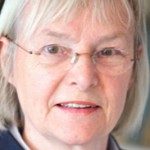Link to Pubmed [PMID] – 25605943
Link to DOI – 10.1073/pnas.1424538112
Proc Natl Acad Sci U S A 2015 Feb; 112(5): 1446-51
Neck muscles constitute a transition zone between somite-derived skeletal muscles of the trunk and limbs, and muscles of the head, which derive from cranial mesoderm. The trapezius and sternocleidomastoid neck muscles are formed from progenitor cells that have expressed markers of cranial pharyngeal mesoderm, whereas other muscles in the neck arise from Pax3-expressing cells in the somites. Mef2c-AHF-Cre genetic tracing experiments and Tbx1 mutant analysis show that nonsomitic neck muscles share a gene regulatory network with cardiac progenitor cells in pharyngeal mesoderm of the second heart field (SHF) and branchial arch-derived head muscles. Retrospective clonal analysis shows that this group of neck muscles includes laryngeal muscles and a component of the splenius muscle, of mixed somitic and nonsomitic origin. We demonstrate that the trapezius muscle group is clonally related to myocardium at the venous pole of the heart, which derives from the posterior SHF. The left clonal sublineage includes myocardium of the pulmonary trunk at the arterial pole of the heart. Although muscles derived from the first and second branchial arches also share a clonal relationship with different SHF-derived parts of the heart, neck muscles are clonally distinct from these muscles and define a third clonal population of common skeletal and cardiac muscle progenitor cells within cardiopharyngeal mesoderm. By linking neck muscle and heart development, our findings highlight the importance of cardiopharyngeal mesoderm in the evolution of the vertebrate heart and neck and in the pathophysiology of human congenital disease.
